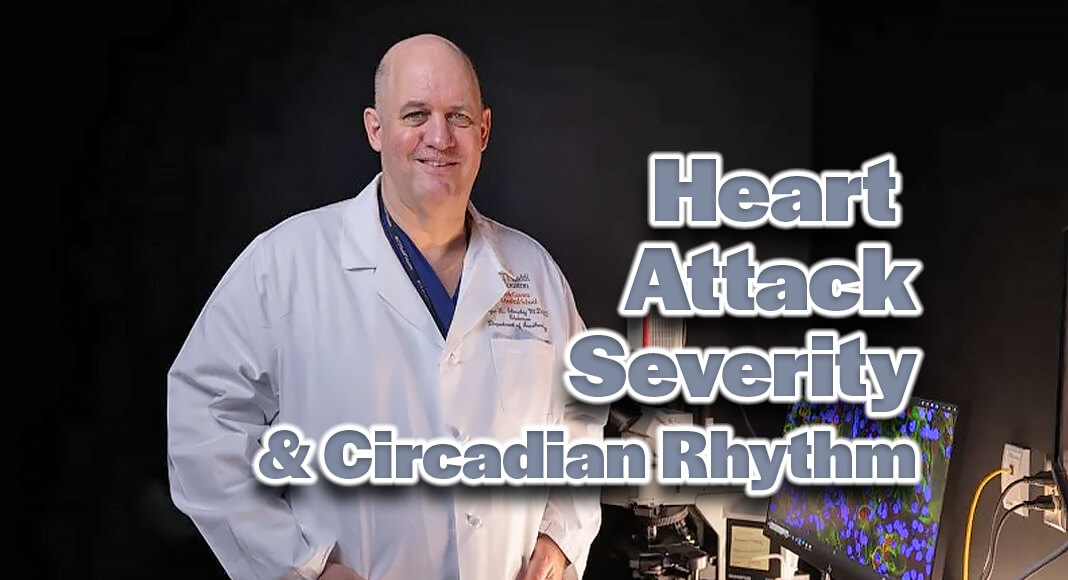
Mega Doctor News
By University of Texas Health Science Center at Houston
Newswise — The molecular mechanism behind why heart attacks can vary in severity depending on the time of day has been uncovered by researchers at UTHealth Houston, potentially paving the way for innovative treatments that align with the natural circadian rhythm.
The study’s findings were published in Nature.
Previous research has shown that the severity of heart damage after an acute myocardial infarction, or heart attack, varies depending on the time of day, with morning attacks resulting in more significant damage and worse outcomes. However, the reasons behind these variations have remained unclear.
“If you have a heart attack in the morning, you are more likely to have fatal arrhythmias, heart failure, and you’re more likely to die from it. The question we asked is ‘Why?’” said Holger Eltzschig, MD, PhD, senior author, and chair and professor of the Department of Anesthesiology, Critical Care and Pain Medicine at McGovern Medical School at UTHealth Houston.
Researchers identified an interaction between two proteins, BMAL1 and HIF2A, as the key factor underlying time-of-day differences in the severity of heart injury following a heart attack. BMAL1 is a core circadian rhythm protein, responsible for regulating biological processes like sleep-wake cycles, metabolism, and hormone release. HIF2A helps the body adapt to hypoxia — low oxygen levels — by stimulating red blood cell production, promoting the growth of new blood vessels, and enhancing cell survival under low-oxygen conditions.
Heart attacks occur when blood flow to the heart is blocked and the muscle begins to die from lack of oxygen. Researchers discovered this interaction between BMAL1 and HIF2A regulated how heart cells in mice responded to low oxygen levels after a heart attack, modulating the heart’s response to injury.
In the preclinical study, researchers found that heart attacks that occurred around 3 a.m. resulted in greater damage to the heart, including larger infarct size and increased risk of heart failure. Heart attacks that occurred at 3 p.m. were less severe, and the heart was better able to adapt to low oxygen levels and promote efficient healing.
The research also revealed that the proteins BMAL1 and HIF2A target a specific gene, amphiregulin (AREG), which plays a vital role in regulating the extent of heart damage throughout the day. By targeting the BMAL1 and HIF2A-AREG pathway with drugs, researchers found they could provide significant protection to the heart, especially when treatments were timed to align with the body’s circadian phase.
According to Eltzschig, future clinical trials must evaluate whether aligning treatments with the body’s internal clock can enhance patient outcomes.
“This discovery opens up new avenues for treating heart attacks by considering the timing of drug administration,” said Eltzschig, who is John P. and Kathrine G. McGovern Distinguished University Chair at McGovern Medical School. “Our findings highlight the potential to use targeted drugs toward those proteins to reduce the severity of heart attacks when administered at specific times. Similarly, patients undergoing cardiac surgery may benefit from such drugs, like the hypoxia-inducible factor activator vadadustat, when given before their operation.”
The research team included Kuang-Lei Tsai, PhD, assistant professor, and Tao Li, PhD, a postdoctoral researcher and co-first author, from the Department of Biochemistry and Molecular Biology at McGovern Medical School. Using high-resolution cryo-electron microscopy, they were able to reveal the detailed structural interactions between BMAL1 and HIF2A to support future drug development targeting the BMAL1-HIF2A complex. This work provided the first direct molecular evidence of their complex formation and offered critical insights that could guide the development of new therapeutic strategies, Eltzschig said.
First and corresponding author was Wei Ruan, MD, PhD, assistant professor of anesthesiology, critical care and pain medicine at McGovern Medical School.
Other UTHealth Houston co-authors include InHyuk Bang, PhD; Wankun Deng, PhD; Xinxin Ma, MD; Cong Luo, MD, PhD; Fang Du, MD, PhD; Seung-Hee Yoo, PhD; Boyun Kim, PhD; Jiwen Li, MD, PhD; Xiaoyi Yuan, PhD; Katherine Figarella, PhD; Yu A. An, MD, PhD; Yafen Liang, MD; Matthew DeBerge, PhD; Dongze Zhang, MD; Zhen Zhou, PhD; Yanyu Wang, PhD; Ragini Nair; Jagat Narula, MD, PhD; Zhongming Zhao, PhD, MS; Alemayehu A. Gorfe, PhD; Yin-Ying Wang, PhD. Other co-authors include: Jaewoong Lee, PhD, Yale University School of Medicine. Joshua M. Gorham; Christine E. Seidman, MD; Jonathan G. Seidman, PhD; and Sary F. Aranki, MD; Harvard Medical School. Lei Li, PhD, Shenzhen Bay Laboratory, China. Jochen D. Muehlschlegel, MD, MBA, Johns Hopkins Medicine.









